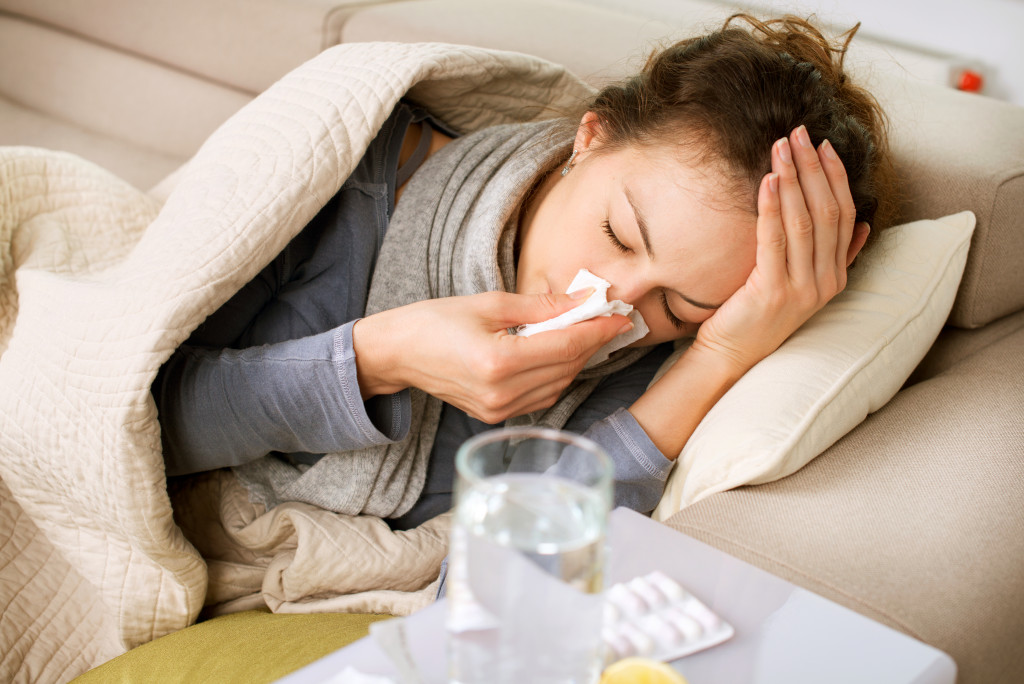The Omicron variant of Covid-19 pushes hospitals in the United States to their limits. According to CNBC, as of January 9, the Department of Health and Human Services recorded 144,441 admissions, breaking the record of 142,315 on January 14 last year. By January 11, the number of hospitalizations increased to 147,000. Also, data from Johns Hopkins University show that there were about 1.5 million new Omicron cases on January 10, with an average of 754,000 new cases daily.
The Atlantic reports that Omicron is so highly transmissible that there are many breakthrough infections even in fully vaccinated people who have had their booster shots. Thankfully, such breakthrough infections have a milder course.

Latest CDC Guidelines
In December, the Centers for Disease Control and Prevention (CDC) updated its guidelines on isolation and quarantine periods related to Omicron. Unvaccinated people and those who have not yet boosted more than six months after their full vaccination must quarantine for five days after known exposure to someone with Omicron. For the next five days afterward, they must wear masks when around others. People who are fully vaccinated and have had a booster need not quarantine but must wear masks around others for ten days. They must quarantine, though, if symptoms appear. All of them must have a SARS-CoV-2 test five days after the exposure.
NBC Chicago reports that according to the CDC, Omicron is transmissible one to two days before symptoms appear and two to three days after that. People who have no symptoms are already contagious two days before they test positive.
Among the symptoms of Covid-19 Omicron are coughing, a runny nose, nasal congestion, sore throat, headache, fever with or without chills, body aches, fatigue, nausea, vomiting, and diarrhea. With Omicron, patients usually do not lose their sense of smell or taste. Also, the infection usually stays in the upper respiratory tract and does not proceed to the lungs. Hence, there is usually no difficulty in breathing.
People who are positive for Omicron must isolate for five days. The isolation can end after that if there are no symptoms or symptoms have resolved. This means that the patient has no fever, even without medication. The person must continue to wear a mask around others for another five days.
Quarantine and Isolation at Home
Given the quick spread of Omicron, every household must prepare for both quarantine and isolation. There must be room set aside for this. Ideally, it must have its own bathroom.
Many homeowners have been renovating their residences during the pandemic. This is a crucial project that must be started immediately before it is needed. If bedrooms are shared, and there is no extra room at home, one must be created. This can be done by renovating the basement or the attic with proper insulation against moisture and extreme temperatures. Alternatively, you can partition off a part of the home or add an extension.
Hire a contractor that practices all safety measures against Covid-19 to ensure that his team does not bring the infection to the household. Make sure that workers protect your home from damage during construction. For instance, floors must be properly covered, and scissor lift diapers must be used.
To further ensure that everyone in the home is protected in case a household member gets exposed or infected, use a high-efficiency particulate absorbing (HEPA) filter in the heating, ventilation, and air conditioning (HVAC) system. This will filter out even the Covid-19 virus encapsulated in air droplets. You can add portable air purifiers with HEPA filters throughout the home. Also, make sure that the HVAC system includes an ultraviolet (UV) light system that kills off viruses and bacteria.
Omicron Care at Home
Patients with mild cases of Omicron can recuperate during isolation at home. One household member must be assigned as the caretaker. They must have been fully vaccinated and must have had a booster shot. They must not be immunocompromised or have an underlying medical condition that makes them vulnerable.
This person must always wear an N95, KN95, or KF94 mask whenever attending to the patient. Hand washing afterward is a must. It is also important that the caretaker be tested five days from the start of duty.
The patient must be made comfortable with plenty of rest. Over-the-counter acetaminophen, ibuprofen, or naproxen can be given to relieve nasal congestion, fever, sore throat, headache, and body aches.
It is essential to prevent dehydration. Urge the patient to take frequent small sips of liquids. This can be water, diluted fruit juice, tea, or broth.
Even if the patient does not have an appetite, encourage them to eat small meals to stay well-nourished. Fruits will be beneficial.
The patient must be closely monitored. Emergency medical care must be sought if the patient suddenly becomes confused; has breathing difficulties or feels chest pressure or chest pain; has a tinge of blue, gray, or paleness on the lips, skin, and nails; or is unable to stay awake.
The country can help the medical community handle Omicron with every household well-prepared. This is also a necessary preparation for any other Covid-19 variant to come.




